Ball pythons / Python regius
Royal pythons are one of the most popular terrarium snakes worldwide in the hobby. Keeping them can be exciting and interesting and generally not too difficult if done right.
Bally Pythons, also known as Royal Pythons, are found in the grasslands and open forests of West and Central Africa. They are native to the Sudanese sub-province west of the Nile, southern Sudan, the Bahr el Gazal and Nuba Mountains region, Senegal to Sierra Leone in West Africa, and Ivory Coast and parts of Central Africa. Royal pythons spend most of their time on the ground or under it - in hiding places. They are most active at dawn and dusk.
It is very important that the terrarium is properly prepared and set up before the Royal Python arrives in your home. In this way, you will ensure that your snake acclimatizes to its new environment as quickly and easily as possible, without endangering its health.
Lifespan: 20 to 30 years

Required starting inventory
- Terrarium at least 90x45x45cm
- Heating mat
- Electric regulator for heating mat
- Substrate
- Water dish
- Two hiding places (one on the warm side, the other on the cool side of the terrarium)
Terrarium
To keep a python, you need a tightly closed terrarium with ventilation slots, as they will gladly escape at the first opportunity. The size of the terrarium will depend on how big the python is at the moment. The size of the terrarium should not be one and a half sizes larger than the python's length, and should not be smaller than two-thirds the length of your snake.For example, baby Royal Pythons can be kept in a 75 liter terrarium, but adults will need at least a 150 liter terrarium. It is better if the terrarium is a little bigger than the python, so that it has free space to stretch out to its full length - and that there is still a little free space left over.
Royal pythons are quite shy and peaceful animals, so like other snakes they will seek comfort in a dark, covered area, which is described in more detail below.
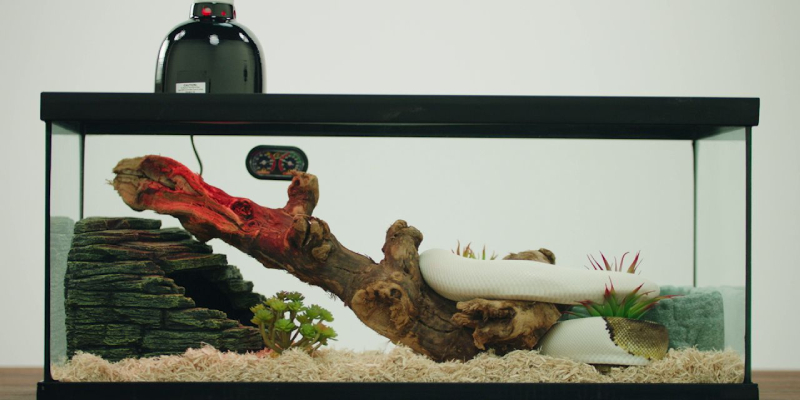
Heat
As Royal Pythons are cold-blooded animals, their health and survival depends on an external source of heat, which they must provide.The warmest side of the terrarium should be between +30°C and +32°C, and the cooler side between +25°C and +26°C. There should be a different temperature range in the terrarium so that the snake can choose the heat it likes. We recommend attaching a thermometer to the end of each terrarium to monitor the temperature in the terrarium more precisely.
To maintain even heat, a heating mat can be used as the main heat source, covering about 1/3 of the floor area of the terrarium. You MUST also purchase a thermostat that connects to the heating mat to prevent the risk of overheating or catching fire. If the average temperature at home is +23°C, you can also use a 5W mat, which is placed under the glass terrarium or in the terrarium under the substrate, or a heating lamp, but it is used less often.
IMPORTANT! If the terrarium is too small, it will not be possible to create an adequate thermal gradient. Also, do not use heating stones, as they are dangerous and not functional - they will only heat the terrarium body, not the surrounding air. If the air temperature will be too low, i.e. from +22°C or below, the snake will become lethargic, it will digest food more slowly, or in the worst case it will stop digesting it and stop eating. Due to this, the vital organs will stop working, which is dangerous for the life of the snake.
Humidity
The best thing is that pythons do not have a special requirement for a high level of humidity in the terrarium. The humidity level in the terrarium should not drop below 50%, but 55% - 60% is the ideal level. For this purpose, you can buy a hygrometer in the www.Spiderzone.lv store, which can be attached to the glass of the terrarium to determine the exact humidity level in the terrarium every time.An easy way to maintain the required level of humidity in the terrarium is to increase or decrease the size of the water container. You can also spray a little water in the terrarium once every couple of days, but pythons do not need to spray water daily.
Optimum humidity in the terrarium will ensure the pythons quickly and easily shed their old skin, facilitating this process.
Substrate
Royal pythons are cleanliness-loving animals, so it is important to choose the right substrate or litter.The substrate must have rounded fractions and no dust. Respiratory diseases can occur from the substrate that emits dust, but sharp fractions, like mulch, can cut the stomach and even the stomach.
The more porous the substrate, the longer it will retain moisture in the terrarium. We recommend using aspen shavings sold in exotic animal stores, thus ensuring their sterility. Aspen shavings are easy to change and are recognized as the best type of substrate in the hobby.
IMPORTANT! Cedar is not a suitable type of substrate because cedar is toxic to all snakes.
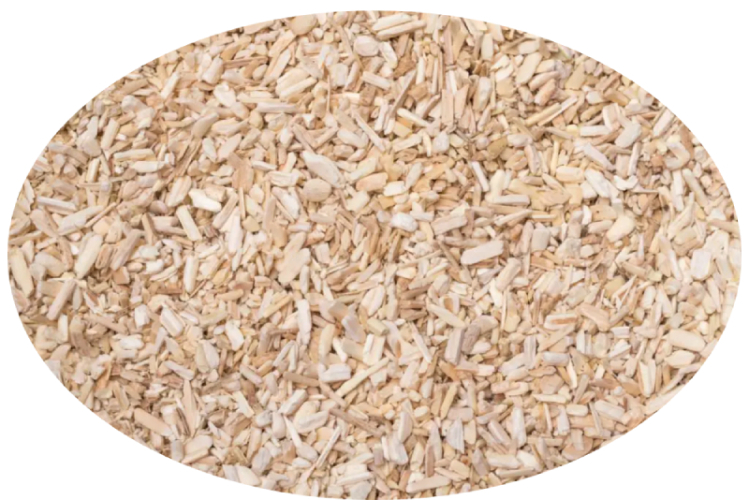
Hides
Like most snakes, pythons also love dark and safe places to spend most of their free time - sleeping or lounging. Various climbing elements can be installed in the terrarium, such as decorative wooden elements and artificial leaves.A hiding place is a critical need for a snake's sense of security, and therefore well-being. If the snake does not feel safe, it will be in constant stress, which will cause eating and digestive problems. This can be easily solved by placing two hiding places or houses in the terrarium with an entrance/exit on one side - one on the warm side and the other on the cool side.
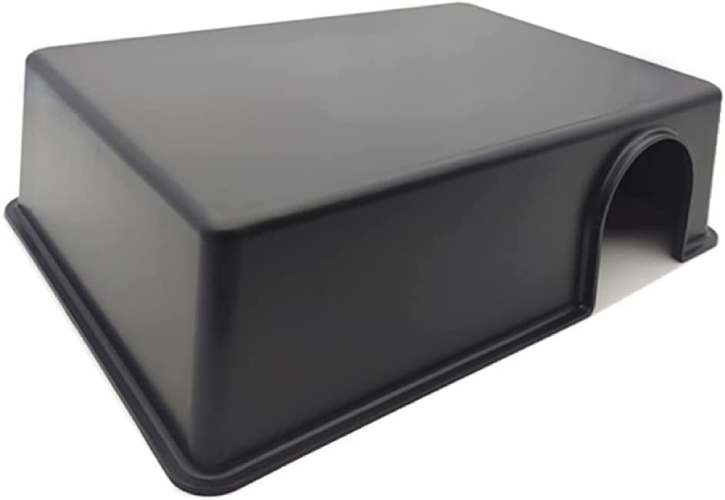
Lighting
Royal pythons have no special lighting requirements if your room or space already has natural daylight, thus ensuring a natural circadian cycle. However, if your room is dark or there is no lighting at all, then it will be necessary to equip the terrarium with additional lighting (it does not have to be bright) to ensure the natural circadian cycle. This can be done by connecting the lighting to a timer - 12 hours on/off.
Drinking
It is vital that the python in the terrarium always has access to fresh and clean water in the container. We recommend changing the water every 3 days to ensure its freshness. Any water container will do, but we recommend providing baby pythons with a 2.5 cm deep drinking bowl, but adult pythons will do with containers up to 1L.IMPORTANT! A healthy Royal Python will not normally soak or sleep in its water bowl. If the snake does this, the humidity level in the terrarium should be checked, it may be too low.
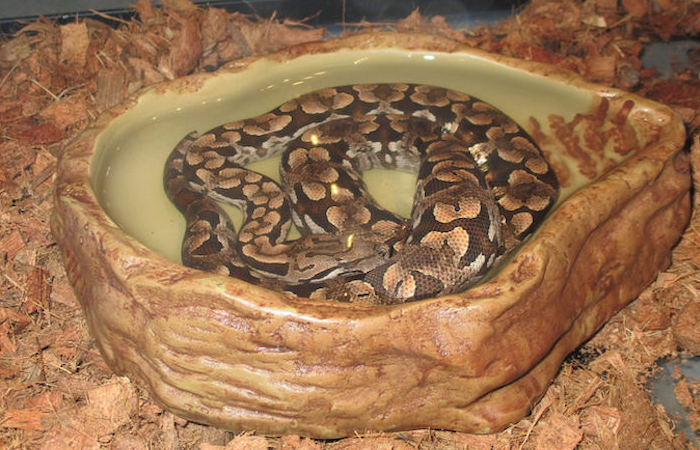
Shedding
Most Royal Pythons shed their old skin every 4 to 6 weeks. Young pythons do this more often than older pythons.Before the snake is about to shed its old skin, the following signs can be observed:
1. First, the stomach will begin to acquire a pink hue;
2. Then the snake's skin will begin to peel off significantly;
3. Finally, the snake's eyes will turn milky and look opaque, taking on a blue tint. In time, the eyes will become clear, and from now on you will be able to watch the snake shedding its old skin over the next 36 hours.
Usually shedding the old skin is not a problem for pythons, as they do not need a high level of humidity in their environment. If, however, the snake sheds its old skin incompletely, or you notice that the shedding is difficult, there are several things you can do to make the process easier:
1. You can increase the humidity level in the terrarium by moving the water container to the heating mat to evaporate the water. You can also reduce the ventilation in the terrarium to better maintain humidity in it;
2. In case of extreme necessity, you can place the snake in very shallow water (maximum 5mm depth) for 2 hours so that the old dry skin will soak up and it will be easier to shed.
It is important to always check the snake after it has shed its skin to make sure that there is no old skin left on the tip of the tail or around the eyes.

Feeding
Feeding royal pythons is quite appreciative, as they do not require variety in the menu.Pythons can live off mice for life, but when it comes to nutrients, it's best to feed them rats as soon as possible.
Pythons should be fed weekly, 1x per week, and the size of a mouse or rat should not exceed the size of the snake's stomach. This means that the mouse or rat should be the same size as the majority of the snake's body.
At other times, adult snakes may eat less in winter. If the snake is not losing weight and looks good, it is not a cause for concern. You can try feeding again after a few days.
As the snake gets older, it is recommended to give a rat that is frozen and then thawed in water and warmed up. This is because a snake becomes slower as it ages, and a live rodent can seriously injure it with a snake bite.
IMPORTANT! NEVER leave a live rodent unattended with your snake. If the snake starts to lose weight, we invite you to contact Spiderzone.lv to get advice from experienced snake breeders or to contact a veterinarian. You can also get useful information and advice in various forums of this hobby.
Handling
In general, Royal Pythons are very docile and calm animals, so it is a pleasure to hold them. Of course, as with every animal, the nature of pythons can vary. In rare cases, if irritated, it may sting. However, even snakes of this temperament can be softened if they are handled often, but with great care and attention, thus taming them.How often can you handle a snake? The short answer is that as long as the snake is not irritated or agitated, you can hold it in your hands, but it is recommended not to do so for more than 20 minutes. As mentioned, Royal pythons are cold-blooded animals, so outside of their terrarium, their bodies gradually cool down. Also, the less often you handle your snake, the less tame it will be, so we recommend handling it at least 1 or 2 times a week.
IMPORTANT! Never handle a snake for at least 36 hours after eating, as this can disrupt the digestive cycle, causing them to regurgitate their food. This behavior can harm the snake and lead to eating problems in the future. Also, it is not recommended to touch and handle the snake during shedding of the old skin. This is because as the eyes become milky and dull, their ability to see decreases significantly. Of course, in this case, the snake will not see its surroundings, so it can become more aggressive.
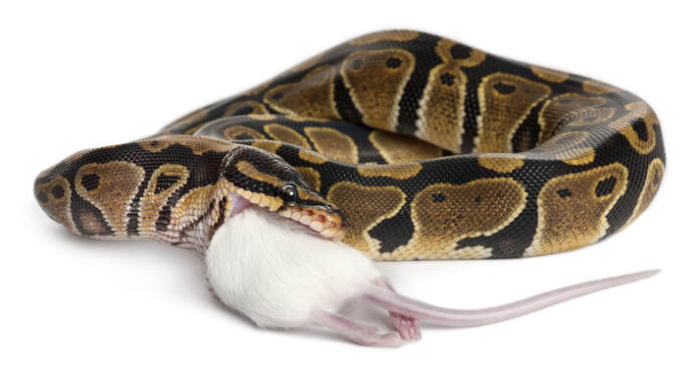
Celaning
We recommend changing the substrate at least once a week in places where it is dirty, but the entire substrate needs to be changed once a month, also disinfecting the terrarium floor with an appropriate, snake-safe product.
Parasites
Snake bites can be fatal, causing anemia or septicemia. Ticks cause pain and discomfort to your pet and carry many diseases. They cause complications, including mouth rot, pneumonia and other illnesses. As soon as you notice small, black, moving dots on the snake's skin or black dots between/under the scales, it is necessary to disinfect the snake and the terrarium. There are different ways to combat ticks, but we recommend Dergall, a simple, effective, proven and safe product.
Description of Dergall :
Dergall is a proprietary product designed to immobilize red poultry ticks as well as other ticks and small insects such as the scaly leg mite and dark beetle. In essence, using Dergall, the python is covered with a layer in which ticks and their eggs are suffocated without causing harm to the specimen.
- physical defense against bacterial infections
- does not penetrate animal organs or eggs
- safe for the environment and people
- does not contain harmful active ingredients
- the physical mode of action eliminates the possibility of pests becoming resistant
Use of Dergall :
1. Mixture 1:100 (10ml Dergall : 1L water) ;
2. Clean the terrarium;
3. Spray the terrarium and wait for it to dry;
4. Use a paper towel/napkin instead of litter;
5. Spray the snake (there is no need to be afraid of the agent getting into the eyes of the specimen);
6. Do not put water in the terrarium for 4 days, put water in the terrarium for 3 days;
7. Repeat the cycle once more.

